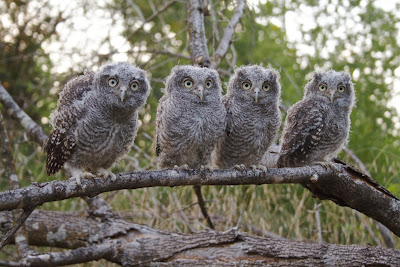The microphone in the nest box has been a source of maddening frustration ever since I installed it years ago. The problem has been a humming noise that comes and goes on a period ranging from hours to months, thereby making systematic debugging of the setup impossible. At its worst, the hum drowns out virtually all of the sounds the mic is supposed to be capturing in the nest box, and, more than once in the last few months, the hum has even included what I assume to be the banter of an AM radio station.
I've suspected every part of the system at one time or another (including the video portion, since degradation of the picture often accompanied the hum), tried more things to get rid of it than I care to remember or recount (including some very good suggestions from readers – thanks for those, by the way), and every time it goes away and I think I've finally solved the problem, it's back again in hours, days, weeks, or months.
Saturday afternoon/night I made yet another attempt to solve the problem. The AM radio station experiences, and subsequent reading about crystal radios, started me wondering about pretty much the only unshielded wiring in the side camera compartment that houses the microphone: the five or six foot length of cable permanently attached to the mic itself. Needing only about one foot of that cable to reach from the mic to the audio/video modem, the rest of the mic's cable is wound into a tight little bundle to keep it out of the way. Wondering if that was functioning as a radio antenna, I decided to try a cheap trick to shield it: wrapping it with aluminum foil and grounding the foil. For good measure—and because I'm guessing, rather than engineering, my way through this problem—I even grounded the springs that suspend the microphone.
So far, the hum is gone, which would be very satisfying if past experience didn't suggest that this "success" could be a mere coincidence, and that the infernal hum could come back at any time, possibly after spending months lulling me into a false sense of accomplishment. Anyway, slightly more than 24 hours into this experiment, so far, so good. Fingers crossed that the problem stays fixed. (Remember: guessing, not engineering, so superstition fits right in. And, yes, I am ashamed of that, but wish me luck, anyway.)
Owl Reaction
This attempt to banish the infernal hum seemed like a quick and simple operation that I could accomplish in maybe thirty minutes. So, when I finally found the energy to tackle it late Saturday afternoon, I thought I'd have the box reassembled and back in the tree before dark. My estimate was only off by about two or three hours.
That meant that the latter stages of the work (including some unrelated maintenance work that I noticed the need for while I had the box down) was supervised by a pair of screech owls that didn't think highly of my efforts. Nonetheless, they got on with the business of calling to each other and meeting on a limb of the nest box tree, in standard mating season protocol. Whether they've mated yet, I have no way of knowing. However, if the egg gestation period is a month, then they should be mating any time now. (Since it's been a relatively warm winter, they might even be ahead of their usual schedule.)

Readers suffering from some of the more extreme forms of boredom can watch the video above, which consists of several fragments of what my system automatically recorded while I was working on the box, muttering to myself, blinding the camera with my head lamp, making terrible noises with aluminum foil, and talking to my feathered critics. (The criticism starts after about twenty seconds.) My calls of "pretty bird(s)" are how I always call for my owls (seldom works) or respond to any owl calls directed at me. Once upon a time, I'd try to emulate their calls, but I gave that up when I learned from Fred Gehlbach that the reason such calls get results from the owls is because they think there's a rival in their territory, a prospect that forces them to show-up to defend their home turf, and causes them significant stress. Since then, I've used my own call of "pretty bird" as a way of identifying myself to the owls. Whether having me around is good, bad, or insignificant, they can decide for themselves, but at least they have a way of knowing what and who they're dealing with.









